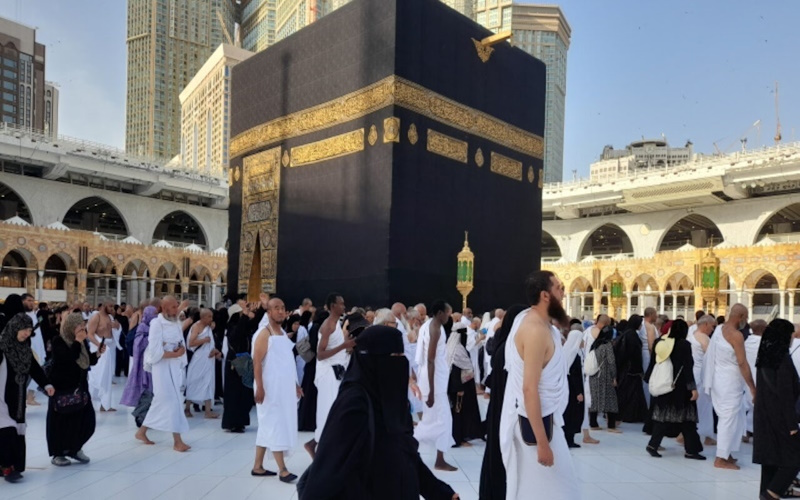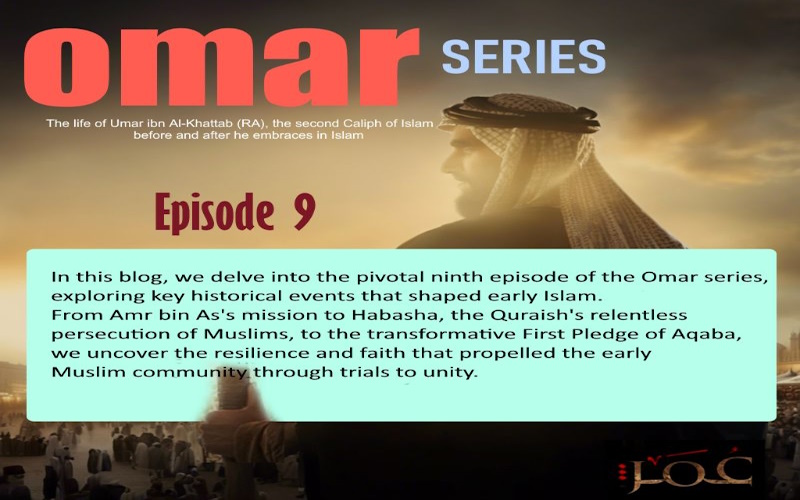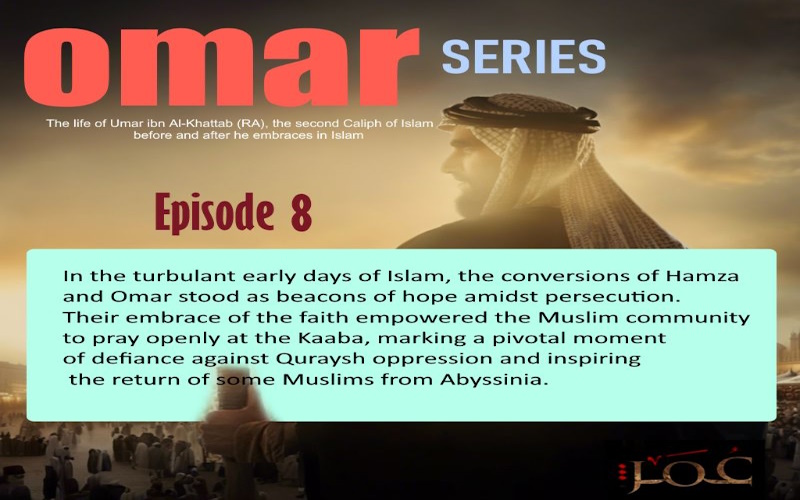A Sacred Journey: From Modern Times to Ancient History
Welcome to a memorable journey to Mecca, a city steeped in history and spirituality. On May 26, 2023, we set off from Luton, on a sacred pilgrimage known as Umrah. As we began this journey, our hearts were filled with expectation and dedication, following in the footsteps of countless believers throughout history.
The Kaaba: A Symbol of Devotion Through the Ages
The destination of this trip is the Kaaba, a simple yet deeply profound monument that has caught the hearts of believers for millennia. To comprehend the intimate link between modern pilgrims and this historic symbol, we must go into the history of the Kaaba.
The Kaaba, which literally means “a cube,” stands in Mecca and may not compare skyscrapers in height or look, but its impact on history has been unmatchable. Muslims face the Kaaba five times a day, every day in prayer, a ritual that has maintained for the last 1400 years. However, its significance precedes Islam.
The Kaaba’s Ancient Origins
Long before Islam, the Kaaba was famous as the House of God, inviting pilgrims from far-off areas to perform the tawaf. The history may be traced back to Prophet Ibrahim and Prophet Ismail, who set its foundations.
As per historians, Hazrat Adam erected the Kaaba, only to have it washed away during the great flood of Nuh (AS). However, the site remained known to the people. It was at this spot that Prophet Ibrahim (AS) was directed by Allah to leave his family, Hazrat Hajar and Hazrat Ismail (AS).
The Story of Hajar and Ismail
The well-known narrative of Hajar and Ismail tells of their trials in the arid land. In her hunt for water, Hajar ran between Safa and Marwa seven times before Angel Jibreel appeared, and Zam Zam, a miracle source of water, was granted to her.
A caravan from the Jurahm tribe was heading past this location like they had done many times previously. Knowing there was no water source around here, they were astonished to find birds hovering in this region, a sign of the presence of water. They found Hajar and Ismail alone in the wilderness. As the customs of the time, Hajar and the infant may have become captives or slaves, but her response was laced with unshakeable Faith.
A Conversation of Faith
When asked who she was and where the water came from, Hajar responded firmly and in a forceful voice.
“I am the wife of the prophet of Allah, Ibrahim,” she stated. “We have been sent here by the one who is the creator of the heavens and the earth, and he sent Jibrail to bring this water for us.”
This declaration thrilled the people of Jurahm with humbleness and spirituality. Witnessing water mysteriously sprouting in the parched terrain, they asked Hajar if they may dwell there. She accepted but with one condition: the water belonged to her.
This agreement formed the foundation for the city of Mecca. Later, Ibrahim returned and was given the exact location of the Kaaba, where Father Ibrahim and his son Ismail raised its foundation.
The Kaaba’s Simplicity and Significance
In its initial shape, the Kaaba was a very simple construction, with boulders heaped on top of each other without any binding material. It had two openings for entrance, and there was no roof. To indicate the starting point for tawaf, a distinctive rock, Hajr al Aswad, was put on the eastern corner of the Kaaba.

According to a hadith, the Prophet said, “The black stone came down from paradise, and it was whiter than milk, but the sins of the sons of Adam turned it black.” This precious stone continues to be a marker of the tawaf to this day.
The Kaaba Through the Ages
The Kaaba, a symbol of unshakable Faith and dedication, has weathered the test of time. From its roots with Hazrat Ibrahim and Ismail to this day, it has witnessed innumerable alterations and restorations.
Prophet Muhammad’s Role in Kaaba’s Restoration
One of the most authentic occasions in the Kaaba’s history occurred during the time of the Prophet Muhammad (peace be upon him). It was a moment when the Kaaba was in dire need of renovation. Harsh weather conditions and floods over the years had taken their toll on the hallowed building, and it had degraded significantly.
Recognizing the gravity of the situation, the Meccans agreed to reconstruct the Kaaba. However, they encountered a significant obstacle – a shortage of halal cash and building materials.
In a stunning turn of events, the Meccans found an unexpected answer to their problem. A Byzantine ship that had journeyed from Egypt to Jeddah was trapped near its destination. This ship was filled with priceless supplies that were appropriate for the reconstruction of the Kaaba.
Upon hearing this news, the Meccans sent a delegation to the stranded ship and negotiated a deal with the merchants on board. In exchange for the resources needed for the Kaaba’s rebuilding, they granted the merchants open admission into Mecca to sell their goods, freed from any taxes.
The Role of Architect Bakum
To assure the smooth completion of this sacred job, the Meccans sought the expertise of a Byzantine architect named Bakum. His abilities and understanding would prove vital in restoring the Kaaba to its former glory.
Under the leadership of Bakum, the renovation of the Kaaba began in earnest. However, the Meccans encountered a severe financial hurdle as they struggled to gather sufficient halal funding to complete the project in its entirety. The Meccans had determined that they will exclusively utilise halal finances (free from usury and any other wicked manner of earning) for the construction of Kaaba.
The Birth of Hatim
In response to this financial shortfall, the Meccans made a difficult decision. They elected to minimise the size of the Kaaba, changing it into a cube. As a result, a modest wall was raised to signify the limit of the original Kaaba built by Hazrat Ibrahim. This barrier, known as Hatim, still exists today and is considered part of the inside of Kaaba.
Protection and Preservation
There is only one verified historical occurrence where Allah protected the Kaaba from external threats. Abraha, the governor of Yemen, sought to demolish the Kaaba to divert people to a chapel he had erected. But Allah intervened, sending Ababeels to decimate his army and frustrate his intentions. This remarkable episode is reported in Surah Al Fil, and it unfolded during a critical time in history — the year of the Prophet Muhammad’s (peace be upon him) birth.
The Prophet’s prophesy that “no one shall attack Mecca except its own people” implies the divine protection around the Kaaba as long as there are Muslims on Earth. However, history also bears testimony to a tragic fact, one the hadith alludes to — the Kaaba’s vulnerability to destruction from within owing to infighting and warfare.
Tragically, this vulnerability materialised in 683 AD, when Abdullah ibn al-Zubayr governed Mecca. Conflict arose between him and the Umayyads, leading to the siege of Mecca and a terrible fire that badly damaged the Kaaba’s structure. In the wake of this calamity, Abdullah Ibn Zubayr began on a quest to reconstruct it. He inserted Hatim into the Kaaba, restoring it to its original form, as constructed by Hazrat Ibrahim.
The second siege of Mecca unfolded in late 692 CE, with the Umayyad army, led by Hajjaj bin Yusuf, assaulting the Kaaba with stones and winning control of Mecca. Tragically, Hazrat Zubayr met martyrdom during this period. In the following, the Umayyads dismantled the edifice created by Hazrat Zubayr and reconstructed it, based on the foundations laid by the Quraish. The Kaaba, once again, assumed the characteristic cube shape that we witness today.
The annals of history also mention a sad event in 930 CE when the Qarmatians laid siege to Mecca under Abu Tahit al-Jannabi. Blood was poured within the neighbourhood of the Kaaba, and the precious Hajr Al Aswad was stolen. This gloomy period saw the Kaaba without the presence of Hajr al Aswad for more than twenty years.

Finally, in 952 CE, Abbasids were able to gain the liberation of Hajr al Aswad, which had been turned into pieces during this troublesome period. The damage was permanent, and later, in the time of the Ottoman Empire, several portions of Hajr al Aswad were brought to Istanbul and installed in various mosques across the city.
Today, Hajr al Aswad consists of 8 pieces of stone chips, a painful reminder of the struggles and sufferings the Kaaba has endured through the millennia.
A Modern Umrah Journey
As we start off from Luton on our pilgrimage journey to Mecca for Umrah, we carry the weight of history and dedication with us. Our approach retraces the footsteps of prophets and believers who have sought the Kaaba’s spiritual embrace for generations.
Our journey, from the excitement of departure to the calm of the Umrah terminal in Jeddah, is a tribute to the unshakable tie between Allah and His creation. It is a reminder that the Kaaba serves as a symbol of solidarity, dedication, and the enduring Faith of Muslims from all corners of the world.
A Continuation of Faith
Today, as we do the tawaf around the Kaaba, we continue a ritual that has transcended time and location. This act symbolises the inherent oneness of the Muslim ummah, our enduring Faith in Allah, and our link to the rich history and spiritual significance around the Kaaba.

Ultimately, our journey to Mecca for Umrah is not just a personal pilgrimage; it is a continuation of a legacy that spans back through the years. It is a trip that ties us to the devotion of Hajar, the Faith of Ibrahim, and the prophetic legacy of the Prophet Muhammad (peace be upon him). It is a tour that reminds us that the Kaaba is not simply a stone structure but a symbol of your connection to Allah and to the history of Faith itself.
Our hunt for this adventure began earlier in the year when we booked our flights roughly 6 months in advance based on holidays in May 2023. The Saudi visa policy also made it easier for UK passport holders to apply for visas on arrival at the airport.
However, the scenario took a turn when we started hearing news that Saudi officials routinely prohibited admission into Mecca near the Hajj season. This was frightening considering Hajj was only a few weeks away.
Then we received this information from our family in Jeddah that as of 15th May, Saudi officials have prohibited entry into Mecca for all foreign nationals owing to the hajj season. This restriction, however, did not apply to Umrah permit holders.


Umrah permit is granted using an app, “Nusuk”, which can only be registered if you have a visa, as it requires a visa number for registration.
This revelation pushed us into panic mode as the concept of arriving at Jeddah and securing a visa on arrival sounded quite ambitious. We quickly got on to the Saudi visa page and applied for a visa online. Fortunately, the process took little time, and the details were uploaded and fees paid online. The Visa was provided within a day, which means that, utilising visa information, the Nusuk app could now be registered.
We succeeded to get Nusuk registered, and the app displayed the last entry in Mecca for Umrah on 3rd June 2023. We managed to book our Umrahs via the app, and consequently, the permissions were provided. It was a major relief, since we were all ready for our journey.

Our journey began as we set off from Luton. The excitement fills the air as our luggage is packed, and we are all set to start on this spiritual excursion. As we got at the airport, we reported at the airline check-in counters and our luggage was checked in. After passing the security check, we anxiously waited for our boarding time.
Soon, we were ready to board the plane, bursting with enthusiasm for the voyage ahead. The flight from London to Cairo takes off on time, and we are provided to a lovely dinner during the voyage. The hours pass fast as we enjoy the in-flight hospitality.
After around 5 hours, we landed in Cairo. We were then brought to the terminal for Jeddah on a bus. Here, we had a 3-hour layover. During this time, we got into the clothing of Ihram and prepared for the next phase of our journey.
The Umrah and Hajj terminal at Cairo is modest, hardly seeming like an airport terminal, but more like a vast bus stand or a rail station. There was just one Coffee and breakfast outlet in this bustling terminal. The flight took off from Cairo to Jeddah. As we reached Jeddah, We got formally in the state of Ihraam as we passed Miqaat and conducted our niyyah (intention).
We landed at the North Terminal in Jeddah, designated to Hajj and Umrah tourists. The immigration process was swift as our visas and Umrah permits were already taken care of. After completing the immigration processes, we grabbed our bags and were ready for the next phase of this precious journey.

For tourist visa holders, the North terminal only gives a limited choice other than to order a taxi for Mecca. The alternative is to take a taxi to the train station and board the Harmain train to Mecca. There are no buses that leave this station to reach Mecca.
We booked a taxi and agreed a price to take us to our accommodation in Mecca. The blazing heat in Jeddah and all along the way to Mecca gave us a true idea of what life is like here in Mecca and the patience required to execute rituals.
Long gone the days when camels, caravans or pilgrims on foot were a common sight. Mecca is today a lively metropolis with skyscrapers dominating the skyline. It took roughly one and a half hours to go to Mecca and land at our hotel.
Dar Al Bayan is about a 10-minute’ walk to Haram. The famous Ibrahim Khalil Road neighbourhood features various restaurants, hotels and small shops on the other side. Our Umrah appointment came soon after Fajr in the early morning hours. That provided us time to recover and prepare for the Umrah soon after Fajr.

The sight of Kaaba after many years is stunning. However, the huge number of people in Haram means that you can only see Kaaba from close when you enter inside at your assigned time for Umrah. Otherwise, the five prayers are all done outside the gates of Haram in vast courtyards.
There were literally hundreds and thousands of pilgrims in Mecca to take the opportunity of Umrah before the Hajj, as Umrah admittance will end after the 3rd of June. With great excitement and devotion, we completed our tawaf of Kaaba. Then managed to offer salah near Maqam e Ibrahim (station of Ibrahim).
Taking a tumbler full of Zam-zam, we entered the halls of Saffa and Marva. The air-conditioned corridors with tile flooring and enclosed structure give no resemblance to the run that Hagar did hunting for water centuries ago. But you are always aware of what and why are you practising this ritual? Despite the air-conditioned structure, you do get to realise how long the run is between the two hillocks. You cannot fail to admire the difficulty and resilience that must have been suffered by Hagar when she observed her small baby wailing with thirst. She ran seven times along these two sacred hills until Allah opened Zam Zam for her.
Completing this ceremony indicates that the only thing left is to cut your hair, and Umrah is accomplished. Soon, we headed to Ibrahim Khalil Road for some breakfast and started strolling around hotels, seeking for a decent spot to book as we had only booked one night in Dar al-Bayan Hotel.
It took us an hour to settle into another place for the next three nights. This hotel was on Ibrahim Khalil Road and a straight route to Haram in approximately 10 minutes.
The next five days passed quickly when we spent a day in ziarats across Mecca, visiting all the historical places and ended the day in Masjid Ayesha to establish an intention for Ihram for the next Umrah.
Four days is hardly a time in Mecca, and all good things come to an end. The bustling lifestyle and brief breaks mean that you merely get a feel of the place. Soon, it was time to proceed for Madina. We booked a Saptco bus ticket to Madina and left Mecca with a sorrowful heart. Not sure when and if we will be blessed to visit this city again.






